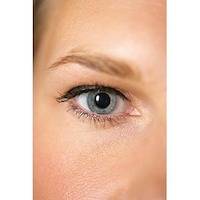When a brand new car is driven off a dealership lot, its plastic headlight lenses are clear and pristine. Over time, due to contaminants in the environment and oxidation from ultraviolet rays, those same lenses can become cloudy, yellow and opaque. Cloudy headlights can decrease visibility and potentially put drivers at risk.
Similar scenarios sometimes unfold involving the human eye. Starting around age 40, proteins in the eye may begin to break down and cause lenses to become cloudy. UV rays can be damaging to the eyes and contribute to this natural protein degradation. While pronounced vision problems may not occur immediately, the American Academy of Ophthalmology says vision can be impaired later in life. The organization All About Vision states cataracts are the most common cause of vision loss in people over age 40 and also are the principal cause of blindness in the world.
Unprotected exposure to the sun is just one contributor to cataracts. Certain medical problems, such as diabetes, also can cause cataracts. An eye injury, eye surgery or radiation treatments on the upper body also can cause cataracts, as can corticosteroids, advises the AAO. Congenital cataracts, which occur when infants are born with cataracts, may be caused by infection, injury or poor development in the womb; otherwise, they can form in childhood.
Cataracts form in various regions depending on the cause, according to AAV.
— Subcapsular cataract: A subcapsular cataract occurs at the back of the lens. People with diabetes or those who take high doses of steroid medications have a greater risk of developing this type of cataract.
— Nuclear cataract: This cataract forms in the central zone of the lens and is often associated with aging.
— Cortical cataract: This cataract is characterized by opacities that are white and wedge-like, which form on the periphery of the lens. Eventually they work to the center in a spoke-like fashion. Cortical cataracts can result from aging.
Symptoms of cataracts often can be slow to form, so people may not even notice they have cataracts until they start to block light, while others may learn of their presence during vision exams. Cataracts may cause vision that is filmy, blurry or foggy, indicates WebMD. In older adults, nearsightedness may be attributed to cataracts. Glare, both during the day and at night, also may affect vision due to cataracts. Double vision or changes in the way one sees color can be symptoms of cataracts as well.
Eye professionals can diagnose cataracts and make recommendations on the course of treatment. Cataract removal surgery is highly effective. More than 95 percent of people who have undergone the surgery experience improvements. Such surgeries are often performed on an outpatient basis.






